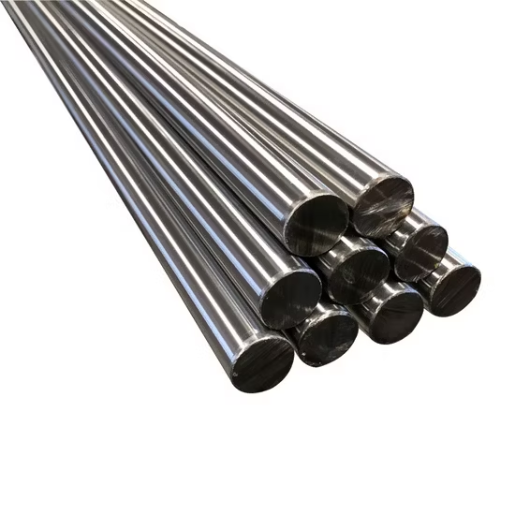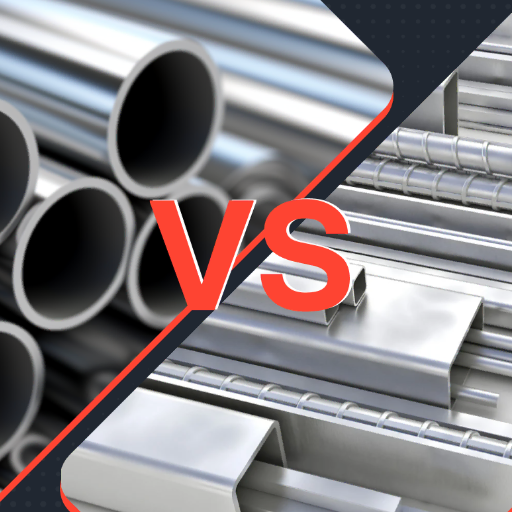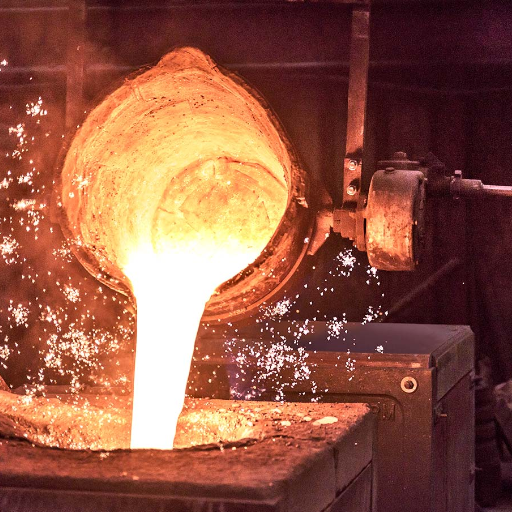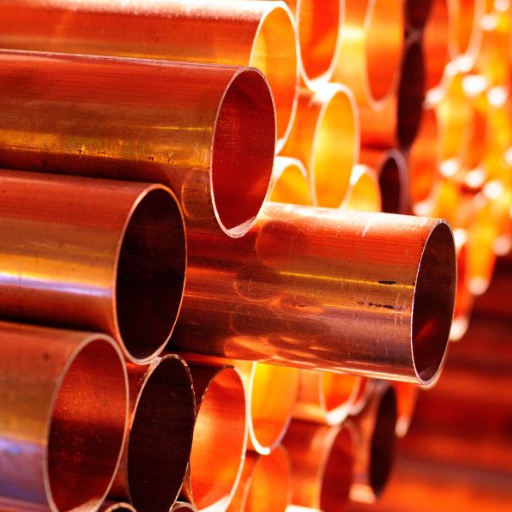The robust nature and versatility of stainless steel make its round bars key elements in numerous industries. This guide intends to explain the crucial aspects of stainless steel round bars encompassing their properties, classifications, production methods, and application fields in engineering and construction. Readers are expected to learn the technical details regarding the stainless steel round bars and the criteria for selection of materials as well as the benefits that are offered in comparison to other materials. You may be an enthusiast or a professional in the field but this post will prepare you to make vital decisions on the application of stainless steel round bars, and in the end, augment your understanding.
What is a Stainless Steel Round Bar?

Stainless steel has an irresistible allure due to the strength it boasts and the corrosion resistance it has. As a result, Solid Bars made from Stainless Steel possess some phenomenal qualities that make them easy to mold into any specific grade or size. Such strength and durability make the bars versatile, meaning they can be employed in many industries such as building and construction, machining, or even manufacturing. With such versatile applications, it is no wonder these Solid Bars are made at scale. Furthermore, Solid Bars made from Stainless Steel can withstand harsh environments making them useful for high-performance tasks.
Understanding the Size and Diameter
Stainless steel bars must be studied in terms of available sizes, as well as diameter since these attributes determine whether or not they are appropriate for a given application. The size is defined in terms of nominal diameter, which in this case is the cross-sectional measurement of the bar. Depending on the grade and other manufacturing conditions, standard diameters usually range from an eighth of an inch to a few inches. Stainless steel bars can also be categorized in terms of their specific shapes, for example, round bars, square bars, and flat bars which all have different uses.
The range of acceptable dimensional variation is usually controlled by standards like ASTM, ASME, or ISO. For example, round bars are considered to conform to either ASTM A276 or A484 specifications, which allows a certain amount of variability in diameter and surface finish. On the other hand, precision ground bars are more suitable for dimensions in which a high degree of accuracy is required, such as in the machining of components. Knowing this surely guides engineers on how to choose the right material, thus ensuring proper mechanical and structural qualities for the intended use.
Different Grades of Stainless Steel
Stainless steel is classified into various grades, each with distinct properties and applications. The primary grades include austenitic, ferritic, martensitic, duplex, and precipitation-hardening stainless steels.
Austenitic stainless steels (such as grades 304 and 316) are the most widely used, characterized by their excellent corrosion resistance, high ductility, and non-magnetic properties. Grade 304 is suitable for general purposes and is cost-efficient, while Grade 316 provides superior resistance to corrosion due to added molybdenum, making it ideal for marine and chemical environments.
Ferritic stainless steels (e.g., Grade 430) have lower nickel content, making them more affordable. They offer moderate corrosion resistance and are commonly used in automotive parts, home appliances, and interior decorative elements.
Martensitic stainless steels (such as Grade 410) are known for their high strength and hardness but have lower corrosion resistance. These are commonly used in applications requiring wear resistance, like cutlery and tools.
Duplex stainless steels combine characteristics of both austenitic and ferritic grades, offering higher strength and better stress corrosion resistance. Examples include Grades 2205 and 2507, commonly employed in chemical processing, oil, and gas industries.
Precipitation-hardening stainless steels (e.g., Grade 17-4 PH) provide high tensile strength and controlled hardening, suitable for aerospace and industrial applications.
Understanding these grades enables precise material selection to match operational requirements, environmental conditions, and cost considerations.
Common Applications and Uses
Stainless steels are utilized across a broad spectrum of industries due to their unique properties such as corrosion resistance, durability, and strength. Some of the most common applications include:
- Automotive Industry
Stainless steels, particularly ferritic and austenitic grades, are used in the production of exhaust systems, trim, and structural components due to their ability to withstand high temperatures and resist corrosion. They ensure longevity and performance under demanding conditions.
- Construction and Architecture
Stainless steel is widely employed in building facades, roofing, and structural frameworks as it offers superior strength, aesthetic appeal, and resistance to weathering. Duplex grades are particularly common in demanding structural applications.
- Medical and Pharmaceutical Equipment
Austenitic grades, such as 316L, are heavily used in surgical instruments, implants, and hospital equipment due to their biocompatibility, resistance to sterilization chemicals, and hygienic properties.
- Food Processing and Storage
Due to its non-reactive surface and ability to resist bacteria growth, stainless steel is found in industrial kitchen equipment, cookware, and food storage tanks.
- Chemical and Energy Sectors
Duplex and austenitic stainless steels are preferred in chemical processing plants, oil and gas pipelines, and nuclear facilities as they are highly resistant to corrosion from aggressive chemicals and extreme environments.
- Cutlery and Tools
Martensitic stainless steels are selected for the production of knives, scissors, and industrial tools because of their strength, hardness, and ability to maintain sharp edges.
These versatile applications underline the importance of selecting the right stainless steel grade to ensure long-term performance and cost efficiency across diverse industries.
How to Choose the Right Stainless Steel Bar?

When selecting the appropriate stainless steel bar, consider the following key factors:
- Application Requirements
Determine the specific use of the stainless steel bar, such as structural support, machining, or exposure to corrosive environments. This will guide the choice of grade and alloy type.
- Corrosion Resistance
Evaluate the environmental conditions, including exposure to moisture, chemicals, or extreme temperatures, to select a grade with adequate corrosion resistance, such as austenitic stainless steel for highly corrosive settings.
- Mechanical Properties
Assess the required strength, hardness, and toughness of the material. For instance, martensitic stainless steels are ideal for applications demanding high strength and durability.
- Fabrication Considerations
Consider ease of machining, welding, and forming. Grades like 304 stainless steel offer excellent weldability, while 416 stainless steel is optimal for machining processes.
- Cost Effectiveness
Balance performance requirements with budget constraints. Selecting a grade that meets both operational needs and cost considerations will ensure long-term value.
Choosing the right stainless steel bar involves aligning material characteristics with application-specific demands to achieve optimal performance and efficiency.
Considerations for Length and Size
When choosing the correct length and dimension of a stainless steel bar, attention should be paid to application needs and manufacturing limitations. The desired measurement should be relative to the load-bearing requirement and must not be too dimensional to ensure that the bar does not bend or rupture under stress and strain. Some of the size-determining specifiable factors are span length, probable loads, and allowable deficit for deflection.
Moreover, the availability of the material in standard lengths and thicknesses should be taken into account to eliminate excess material and curb expenses. For specialized applications, special dimensions may be needed which could result in higher cost and longer lead times. Similar tools precision in dimensions affects machinability and assemble compatibility with other parts thus necessitating the complex calculations and measurements to make sure that the bars provide a perfect fit and good functionality in any work.
Evaluating Corrosion Resistance
While evaluating the corrosion resistance from external penetration in stainless steel bars, it is important to pay attention to the surrounding environment, the grade of stainless steel used, and other corrosive factors if any. As noted previously, stainless steel largely owes its corrosion mitigation efforts to the passive corrosion layer formed over its surface barrier which in this case is chromium oxide. Its effectiveness is dependent on the alloy chromium content, which typically, has to be above 10.5%. Other alloying components such as molybdenum and nickel in sufficient quantities can improve the resistance to more devastating forms of corrosion such as pitting or crevice corrosion that are very common in places rich in chlorides.
In addition, the right grade selection for an application is also important which in the case of bar grade would be 304 and 316; 316 is found to be more resistant than the former due to the increased content of molybdenum. Another consideration is the region of use such as near marine environments or industrially exposed regions require more stainless steel grades than 304 and 316 which are usually more aggressive and saline resistant. Some remedial activities such as cleaning and inspection will also assist in maintaining the corrosion resistance property of the stainless steel surfaces by limiting the possibility of surface contaminants compromising the more passive properties of the surface barrier.
Understanding Specifications and Standards
Consistency across applications is maintained when stainless steel products are manufactured using standard specifications, as well as ensuring selection, performance, and durability for specific applications. Different standards like ASTM, AISI, EN, and ISO all specify the grades of stainless steel and their respective chemical composition, mechanical properties, and performance metrics. One such example is ASTM A240, which outlines standards for chromium and chromium-nickel stainless steel plates, sheets, and strips for various applications, and AISI designation numbers like 304 and 316, which provide information regarding the characteristics and composition of the stainless steel.
Specification guidelines such as those surrounding the aforementioned grade aid in determining performance standards as well as marine application capability due to the addition of molybdenum. This is akin to grade 316 which is recognized under ASTM A316. Similarly, quad and super grade austenitic grades are acknowledged under the help of ISO due to their existing high resistant properties towards industrial saline conditions and pitting and crevice corrosion.
The value attached to implementing the specified guidelines significantly aids in the ease of consistent stainless steel selection as well as maintenance enabling a prolonged lifespan, considering the range of applications. This remains consistent as any further references using these standards will further strengthen the product’s reliability and durability.
What are the Benefits of Using Stainless Steel Round Bars?

The use of stainless steel round bars is popular in multiple industries because they provide benefits like corrosion resistance and durability in hostile environments like marine and industrial environments. They are highly versatile because these round bars have high tensile strength and deform very little under heavy mechanical loads. Moreover, they can be easily and accurately tailored to meet the specifications of individual projects which makes them machinable. Positive machinability is further enhanced by the metallic appearance of the material along with its low maintenance which adds functional and structural value.
Advantages of 304 Stainless Steel
304 stainless steel is widely used and is renowned for its unique qualities. 304’s corrosion-resistant properties make it sufficient for moist, chemical-laden, and varying temperature environments. The material is also high in mechanical strength with great ductility, making it appropriate for a wide range of applications where strength and flexibility are needed. Moreover, because 304 stainless steel is non-ferromagnetic, its oxidation resistance guarantees superb long-term endurance against both structural and mechanical violence. Its superb ease of maintenance, combined with its resistance to stains and rust, truly proves its competence in the food industry, construction, and even chemical industries.
Why 316 Stainless is Preferred
316 stainless steel is usually preferred over 304 stainless steel in corrosive environments. This is especially so because chloride and marine environments’ molybdenum addition improves its pitting-resistant ability. Its extreme performance at high saltwater or industrial chemical conditions makes it useful in equipment like marine utilities, chemical tanks, and salt water or industrial medical devices. Additionally, 316 stainless steel can maintain its good mechanical properties and heat resistance in a stressed and high-temperature environment. It is more expensive than 304, but like other specialty alloys, it has a long life and reliable performance in corrosive environments.
Exploring a Wide Range of Applications
316 stainless steel is preferred across many sectors due to its remarkable properties. Saltwater-resistant ships and boat fittings, as well as platforms that operate offshore, are made from it in the marine sector. Similarly, its high corrosion for a variety of chemicals makes storage tanks, heat exchangers, and piping systems in the chemical processing industry easy to maintain. Surgical tools, orthopedic implants, and other medical instruments are made from 316 stainless steel due to its biocompatibility and non-porous surface. The food and beverage sector calls for the use of 316 stainless steel for the construction of hygienic surfaces, food processing apparatus, and brewing tanks. A 316 stainless steel comprising brewing tank guarantees durability, stain resistance, easy cleaning, and safety. As evident from these applications, it is easy to see why 316 stainless steel is the metal of choice when dependability and resistance to corrosive elements are needed.
How is Stainless Steel Bar Manufactured?

Manufacturing processes of stainless steel bars require several distinct steps to attain the necessary quality and performance. The first step includes melting the raw materials which include Iron ore, chromium, nickel, and molybdenum in an electric arc furnace. Once molten, steel is then cast into solid forms termed as billets or blooms. These are then shaped through hot rolling into the appropriate-sized bars. After the rolling process, the bars undergo further processing steps which include annealing and descaling. Descaling removes surface impurities while annealing through heat and cooling increases ductility and toughness. Depending on the targeted application, further finishing like cold drawing, grinding, and polishing are used to obtain specific dimensional, surface quality, and mechanical parameters. Lastly, the stainless steel bars are cut to length and are inspected before distribution.
Overview of the Processing Steps
To achieve the desired mechanical and surface quality properties of stainless steel bars, a multi-stage approach is required. The first step is to combine raw components such as Iron ore, Nickel, chromium, and Molybdenum in an electrical arc furnace. These materials are then melted to cast them into blooms or billets which is the initial step for further processing.
With hot rolling, the billets are reformed to the appropriate bars’ dimensions and profiles which is the second stage of the process. During this stages, heating is applied to reinforce the bars’ structural integrity as well as the original shape. The annealing stage then takes over, where the bars are placed in a controlled environment that alters their temperature to increase further ductility and toughness. Afterward, the bars undergo surface oxidation removal through pickling or mechanical brushing. These methods constitute descaling.
The bars are further subjected to cold drawing, grinding, and polishing in order to meet the required surface finish and dimensional tolerances. Every step taken is closely observed and modified to cater the instructions given, for instance increased mechanical strength or reduced corrosion. The final steps consist of quality check and cutting the bars, after which they are packaged for various industries and sectors.
Role of Quality Control in Manufacturing
Quality control (QC) forms an important part of the manufacturing process as it is essential for the checking of standards and product specifications. It involves the examination and evaluation of raw materials, semi-finished products, and finished products. This process aids in the identification of defects at all levels in the production cycle which minimizes wastage and increases productivity. Effective QC approaches like statistical process control (SPC), and non-destructive testing (NDT), help manufacturers maintain uniformity, streamline processes, and ensure safety and compliance. Also, assurance of quality through ISO standards assists in the application of quality-centered frameworks.
As a result of accurate QC, customer trust and loyalty increase significantly as high-quality and reliable products are produced. It uses proactive strategies including monitoring of processes and also reactive strategies such as root cause analysis and rework. The information churned from QC aids continuous improvement relative initiatives to build better products at low operational expenditure. Precise QC implementation in manufacturing processes helps to meet market requirements and enables manufacturers to retain a competitive edge in multiple sectors.
Where to Purchase Stainless Steel, Round Bar?

Depending on your needs and location, finding a dependable source for stainless steel round bars should not be an issue. Industrial suppliers like Grainger, Ryerson, and Fastenal provide stainless steel round bars in different grades and sizes. Outokumpu and Sandvik Materials Technology are excellent choices for bulk purchases and custom orders since they specialize in steel manufacturing and distribution. Moreover, Metal Supermarkets and Alibaba have made purchasing stainless steel round bars more convenient by offering them online with all the relevant details. Always ensure vendors adhere to the ISO standards and provide material test certificates for guaranteed quality or compliance.
Finding Reliable Suppliers
When looking for trustworthy suppliers for stainless steel round bars, be sure to check their certifications, obtain customer reviews, and gauge their product range. Suppliers such as Ryerson, Grainger, and Metal Supermarkets excel because of their vast inventories, compliance with international standards, and good customer relations. As with all suppliers, Ryerson offers a vast selection of stainless steel bars with custom processing options suitable for various applications. Grainger, alongside high-quality materials, provides additional detail to specifications with an efficient distribution network. Metal Supermarket’s fame comes from its extensive stock and ease of procuring materials for both local and foreign industries. Be sure to conduct a thorough analysis of the supplier’s compliance with ISO standards and material test reports to determine reliability.
Understanding Inventory and Stock Availability
The management of inventory and stock is fundamental to the effectiveness of supply chains and overall operational effectiveness. Inventory is defined as the goods, raw materials, or articles that a company possesses for manufacturing and selling or ensuring that operations are running smoothly. On the other hand, the preparedness or availability of these items to the customers is referred to as stock availability. Maintaining inventory levels balances overstock and stockout situations, and thus methods such as perpetual inventory systems or periodic reviews assist in tracking inventory.
For example, inventory management software and real-time tracking systems enhance operations by utilizing data analytics and predictive algorithms to automate replenishment and demanded stock visibility in the supply chain. Businesses also utilize key performance indicators (KPIs) such as inventory turnover ratio and fill rate to measure stock sufficiency and locate inefficiency. Organizations can improve customer satisfaction while decreasing the costs that come with maintaining excess inventory or suffering shortages by heightening data integration in inventory practices.
Custom Cut and Fabrication Options
Thank Custom Cutting Service is critical for Industrial, Commercial and even Residential works. Custom cutting involves precise procedures to cutting, shaping, welding, bending, and assembling of materials which include metals, plastics, and composites. Accuracy and efficiency precision is achieved using CNC machining, laser cutting, and water jet cutting. Finishing services such as polishing, coating, and painting are also commonly provided by other service providers.
While looking to hire a custom fabrication service provider, one should always consider their experience, equipment available, and general reputation. A lot of these companies aid in design improvement to help with efficiency performance and material disposal. Think about strict quality standards, project timelines, and durability requirements. These aspects are key focuses when considering quality control measures.
References
Frequently Asked Questions (FAQ)
Q: What is a stainless steel round bar?
A: A stainless steel round bar is a solid cylindrical rod made from stainless steel, known for its corrosion resistance and strength. It is a versatile bar product widely used in various industries.
Q: What are the common uses of stainless round bars?
A: Stainless round bars are widely used in industries such as construction, automotive, and manufacturing. They are often employed in making machine parts, fasteners, and as support rods due to their strength and corrosion resistance.
Q: What is the difference between 304 and 316 stainless steel round bar?
A: The main difference lies in their chemical composition. 304 stainless steel round bar is widely used for its excellent corrosion resistance and affordability. 316 stainless steel contains more nickel and molybdenum, offering superior corrosion resistance, and making it ideal for harsh environments.
Q: What sizes are available for stainless steel round bars?
A: Stainless steel round bars are available in various sizes, typically ranging from 3mm in diameter to larger sizes. The specific dimensions can vary depending on the supplier, so please contact us for more precise information.
Q: How do I choose the right type of stainless steel round bar?
A: Choosing the right type depends on the intended application. For general purposes, 304 stainless steel round rods are suitable. For environments with higher corrosion risk, 316 stainless steel is recommended. Please contact us for guidance on selecting the appropriate grade.
Q: How does a stainless steel round bar compare to other metals like aluminum?
A: While both materials have their advantages, stainless steel round bar offers higher strength and corrosion resistance compared to aluminum round bars. However, aluminum is lighter and can be a better choice for weight-sensitive applications.
Q: What standards do stainless steel round bars comply with?
A: Stainless steel round bars typically comply with ASTM standards, ensuring quality and consistency in their production and performance.
Q: Can stainless steel round bars rust?
A: Stainless steel round bars are highly resistant to rust due to their chromium content, which forms a protective layer. However, in extreme conditions or if not maintained properly, they can still be susceptible to corrosion.
Q: What should I consider when purchasing stainless steel round bars?
A: When purchasing stainless steel round bars, consider factors such as the specific grade, size, and intended application. Ensure the supplier provides quality stainless steel and offers the variety of grades you need. Please contact us for more detailed information.







